Edinburgh's Spaces for People schemes: what's the verdict as most of the town-centre measures are removed?
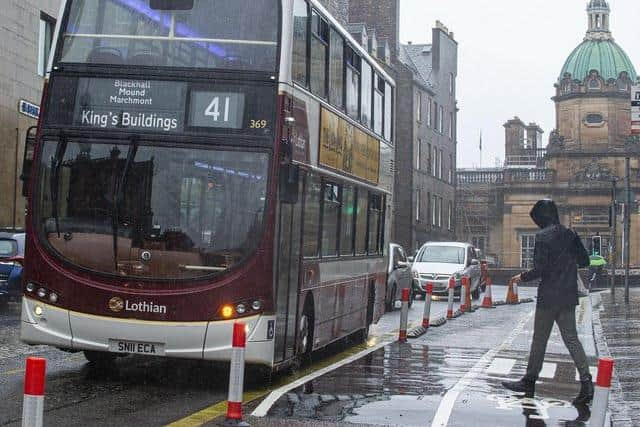

Let us know what you think and join the conversation at the bottom of this article.
But now, with Covid restrictions easing, work is well under way to take out most of these measures, brought in on a temporary basis under the Scottish Government-funded Spaces for People programme.
Some are only too pleased to see them go, but others think the move is too hasty.
Advertisement
Hide AdAdvertisement
Hide Ad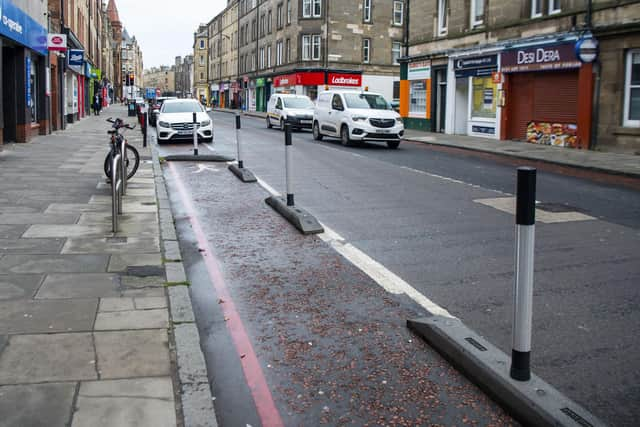

The extra space created by the wider pavements was designed mainly to benefit pedestrians and walking campaign group Living Streets is sorry they are being removed.
"We're disappointed,” said Stuart Hay, director of Living Streets Scotland.
“It's quite a reactionary decision to take out measures which are benefiting pedestrians and people with wheelchairs. Pavements will get more crowded because of this. More time should be taken to evaluate these and also to make them a little bit better.
“Some of the problem has been they were temporary measures and they weren't the most attractive. You need higher standards of improvements for them to be accepted.”
Advertisement
Hide AdAdvertisement
Hide Ad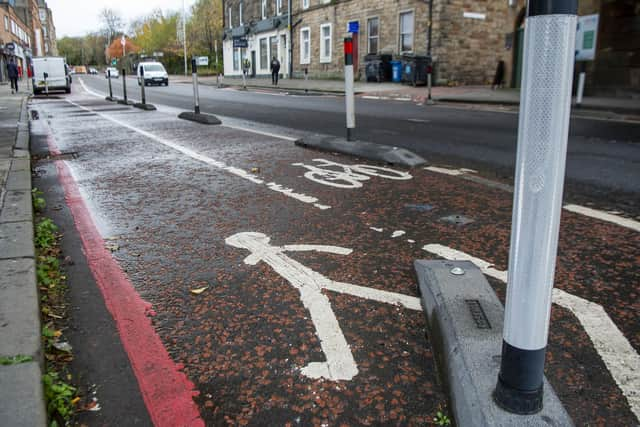

He also thinks the council should have done more to get businesses on board, make the case to them for pedestrian improvements and help them sort out the issue of loading.
He hopes lessons will be learned for the future. “I think it came down to business opposition – the relationship with business needs to be better managed.
“There is an over-emphasis on parking and the importance of parking and an under-appreciation of the number of costumers that will walk in.
“If the environment is more pleasant on the street people will stay around longer and spend more money, so we have missed a trick in Edinburgh.”
Advertisement
Hide AdAdvertisement
Hide Ad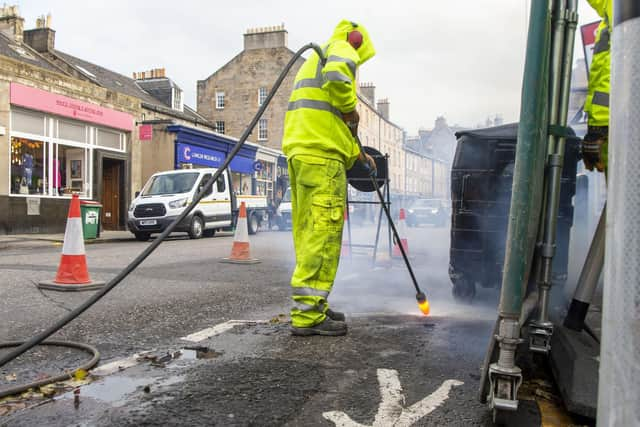

Wider pavements often meant parking spaces outside shops disappeared and businesses complained their older or disabled customers were effectively being denied access.
Roddy Watson, who owns the Gifted gift shop in Raeburn Place, Stockbridge, says he is “delighted” to see the measures being removed in his area.
He says business was poor when shops were allowed to reopen after the first lockdown as a result of the Spaces for People measures, though he adds the major roadworks to replace gas pipes was also a problem. “It was a double whammy,” he said.
Business was not so bad after the second lockdown, but Mr Watson puts that down to a “Buy local” campaign rather than the wider pavements.
Advertisement
Hide AdAdvertisement
Hide Ad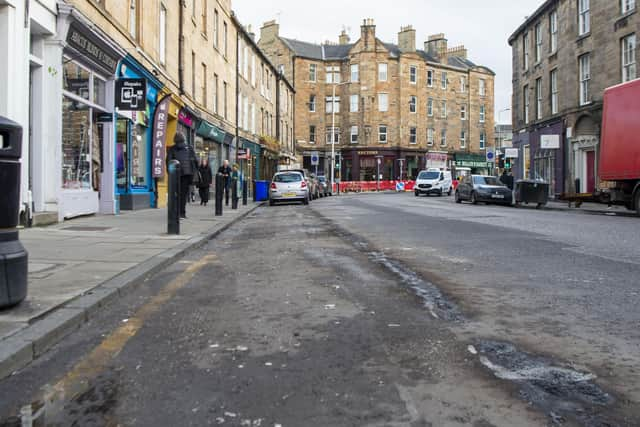

‘Double-edged sword’
Garry Clark, of the Federation of Small Businesses, said members had been frustrated at the lack of consultation when schemes were introduced.
"It was the middle of a pandemic and understandably action needed to be taken quickly, but I think better consultation would have resulted in better measures for everyone. There has been an element of engagement with local communities since then.”
And he said the schemes had been a double-edged sword for the business community.
“For some the measures were pretty essential in trying to get that outdoor space when indoor space was very limited because of social distancing – and it could be the difference between a business being able to stay afloat or running at a substantial loss.
Advertisement
Hide AdAdvertisement
Hide Ad"On the other hand there were businesses for whom it meant loss of parking space and maybe restrictions on deliveries.
"Some businesses will be sorry to see the measures go, others will be quite glad.”
Lee Kindness, vice-chair of Portobello Community Council, says there was never much complaint about the wider pavements in Portobello High Street, where only the widened pavement west of Bridge Street is being kept.
“We've not had much about this at all,” he said. “Quite a lot of on-street parking was still available so maybe the impact was less than in other areas.”
Advertisement
Hide AdAdvertisement
Hide Ad‘It looked like a war zone’
Morningside resident Rob Swinney started his own petition against Spaces for People measures when they were first introduced there. And he collected just under 500 signatures before joining forces with the wider campaigns Keep Edinburgh Moving and South West Edinburgh in Motion (SWEM).
Most of the measures around Morningside Road have now been taken away. “The only bits left are opposite Waitrose, where the pavement is very narrow and should be widened, so that's sensible and probably should be a permanent thing with a proper fix,” said Mr Swinney.
But he still believes the exercise was a mistake. “I watched it every day for months and the extra pavement space was not being particularly well used. People were still walking within a couple of feet of each other.
“What it meant was there was a build-up of litter because the road-sweepers couldn’t get in to clean the gulleys. It just looked like a war zone. The signage for it was blown down and never got put back up again. There was no real maintenance of it – bollards got knocked down and never put up again."
Advertisement
Hide AdAdvertisement
Hide AdAlthough cycle lanes were a less prominent feature of the town-centre Spaces for People measures, there were some stretches which are being removed.
Dave duFeu, of cycle group Spokes, says: “There was one uphill section on Morningside Road and we're very unhappy about that having come out. You're cycling slowly uphill and having the protected cycle lane is really good.
"Now it's out you have cars being held up behind you and you've got parked cars where the cycle lane used to be so you’ve got to swing out into the traffic lane and you’ve got cars coming up behind you but it's uphill so you can't cycle fast.
"The council said Morningside Road is too narrow and there wasn’t space for the cycle route, but now there's cars parked there which are wider than the cycle route was. so any difficulty of the narrow road causing congestion is just as bad if not worse.”
Advertisement
Hide AdAdvertisement
Hide Ad‘Strike a balance’
Disabled groups were highly critical of some of the Spaces for People measures, particularly floating bus stops like the ones on George IV Bridge, which have now been removed along with the walking and cycling lanes.
Robin Wickes, of the Edinburgh Access Panel, is glad to see the back of them but says other measures were more useful.
“It’s important not to throw the baby out with the bath water and I would hope in places like Morningside where there are narrow pavements they take into account the value of having widened them.
“But removal is good for businesses loading and disabled people who need to park outside shops. If blue badge holders who can't walk more than a few metres are unable to park outside a shop that's a major barrier.
Advertisement
Hide AdAdvertisement
Hide Ad“We need to strike a balance – we need wider pavements in places like Morningside but in other places it's valuable for blue badge holders to be able to park outside a shop.
“We would be the first to agree it's important to migrate as many people a possible from driving cars to walking and cycling, but we've got serious reservations about the way the cycle lanes have been rolled out. The council is very proud they’ve rolled out 25 miles of cycle lanes in Edinburgh but many blue badge holders, in particular, feel excluded because they can't park on cycle lanes and we have objected to floating parking because many disabled people, especially blind people, are very nervous about having to walk across a cycle lane to get to and from their car.”
But whatever view people take about the latest changes, they are unlikely to be the last. In the longer term, the council says it is planning to improve the quality of spaces in Edinburgh’s town centres as part of the move to 20-minute neighbourhoods.
A message from the Editor:
Thank you for reading this article. We're more reliant on your support than ever as the shift in consumer habits brought about by coronavirus impacts our advertisers.
If you haven't already, please consider supporting our trusted, fact-checked journalism by taking out a digital subscription.
Comment Guidelines
National World encourages reader discussion on our stories. User feedback, insights and back-and-forth exchanges add a rich layer of context to reporting. Please review our Community Guidelines before commenting.
